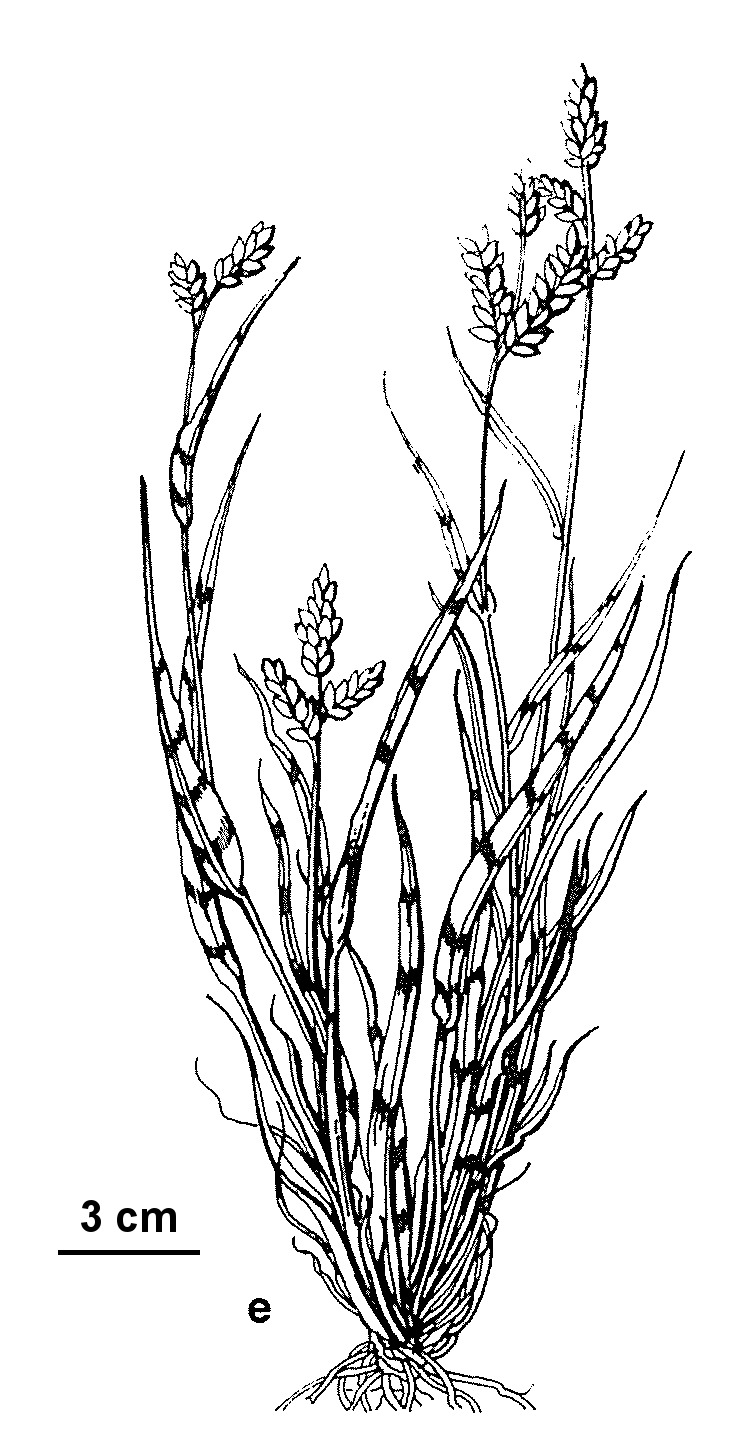Echinochloa colona
(L.) Link Awnless Barnyard-grassTufted or stoloniferous annual. Culms ascending or erect, to 90 cm high. Leaves entirely glabrous or the margin sparsely ciliate at the sheath-blade junction; blade flat, 3–20 cm long and 3–7 mm wide, at least the lower usually with conspicuous reddish bands. Panicle 4–12 cm long, fully exserted at maturity; primary branches appressed or slightly spreading from main axis, (5–)c. 10(–30) mm long, scabrous, devoid of bristles, or occasionally with a few near the base but not regularly subtending spikelets. Spikelets 2–2.9 mm long; lower glume 3–5-nerved, ovate, 1–1.5 mm long, glabrous or hairy; upper glume 5-nerved, as long as spikelet, dorsally rounded scabrous to pubescent; lower floret neuter or male, its lemma equal to upper glume but flat, its palea slightly shorter and membranous; upper lemma subequal to spikelet, dorsally rounded, smooth, pale, with a minute green apical point; upper palea subequal to lemma Flowers Dec.–May.
MuM, VVP, VRiv, MuF, GipP, Gold, CVU, Strz. Also naturalised WA, NT, SA, Qld, NSW. Native to tropical Africa and Asia, but widely naturalised elsewhere. In Victoria, largely confined to the Murray irrigation areas of the north and north-west, but also in the greater Melbourne area, south Gippsland and near Geelong, where an occasional summer-autumn weed in well-watered areas.
Walsh, N.G. (1994). Poaceae. In: Walsh, N.G.; Entwisle, T.J., Flora of Victoria Vol. 2, Ferns and Allied Plants, Conifers and Monocotyledons, pp. 356–627. Inkata Press, Melbourne.
 Spinning
Spinning


